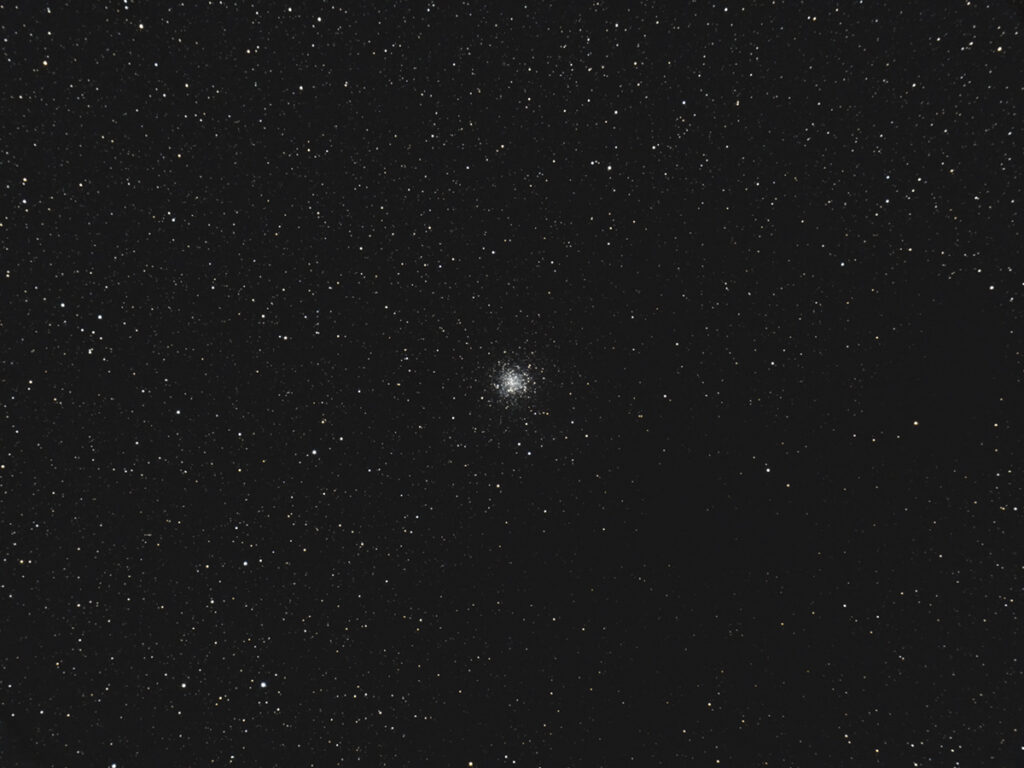
Telescope: Astro-Tech 8” f/8 Ritchey-Chretien, Orion Atlas EQ-G
Camera: QHY 367c Pro, Baader Mk III MPCC
Filter: GSO IR Blocking Filter
Guide scope: Astro-Tech 60mm, ASI120MM mini, PHD2
Exposure: 17x180sec, gain 2000, offset 50, 0C, saved as FITS
Darks: 32×180sec, gain 2000, offset 50, 0C, saved as FITS
Flats: 64×0.5sec, Tee shirt flats taken at dusk
Average Light Pollution: Red zone, Bortle 8, very poor transparency, moonlight
Lensed Sky Quality Meter: 17.2
Stacking: Mean with a 1-sigma clip.
White Balance: Nebulosity Automatic
Software: SharpCap Pro, Deep Sky Stacker, Nebulosity, Photoshop
M9 is a relatively bright modestly condensed (Class 8) globular cluster located 3 degrees to the southeast of Sabik in Ophiuchus. It is relatively close to the galactic core being about 5,500 light years from the galactic core and 26,000 light years from Earth. It is interesting to note the dark lane cutting across the lower right corner of this field as compared to the star rich field to the upper left indicating a swath of dust along the Milky Way blocking the light from the distant star fields beyond.
This was the first test image taken with my new to me QHY 367C Pro full-frame camera. This camera uses the same sensor as my full spectrum modified Nikon D810 and it will be interesting to compare the two. As it turns out this image was taken at a relatively low gain. I used a fairly conservative gain of 2000 for this image as compared to the unity gain for the 367 of 2800that I used here. It has also been a long time since I previously used SharpCap Pro for deepsky imaging. I have a few adjustments to make as I get familiar with this new camera, but this is a good start, particularly given the poor sky conditions and bright moonlight.
M9 is currently well placed in the southeast at sunset.
Recent Comments